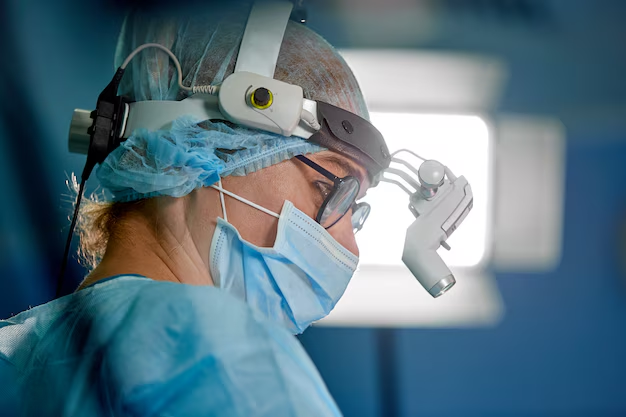Exploring the World of Cataract Surgery: Understanding Your Options
Cataracts can cloud more than just your vision; they can obscure your confidence in understanding the available medical options. If you or a loved one are preparing to address cataracts, knowing your surgical choices is a vital step. In this guide, we’ll delve into the three primary types of cataract surgery, offering a comprehensive overview to help equip you with the knowledge needed to navigate this journey.
What Is Cataract Surgery?
Cataract surgery is a procedure used to remove the lens of your eye when it becomes clouded. While cataracts can cause vision to be foggy or blurry, this surgery aims to restore clarity and improve overall eyesight. As medical advancements continue, cataract surgery has become a routine and successful procedure, often performed on an outpatient basis. But what types of surgery are there, and which might be right for you?
The Three Main Types of Cataract Surgery
Choosing the right type of surgery is crucial for optimal outcomes, and understanding each method's intricacies can inform your decision. Here's an exploration of each type:
1. Phacoemulsification (Phaco)
Phacoemulsification is the most commonly used technique today due to its efficiency and effectiveness.
How It Works:
- A small incision is made in the cornea.
- An ultrasound probe emulsifies, or breaks up, the cloudy lens.
- The emulsified lens material is suctioned out.
- An intraocular lens (IOL) is inserted to replace the natural lens.
Advantages:
- Minimally invasive: With small incision sizes, healing is often quicker and sutures may not be necessary.
- Short recovery time: Patients typically resume normal activities faster.
- Precision: Allows doctors to target the clouded lens precisely.
Considerations:
- While phacoemulsification offers many benefits, it's most suitable for patients without additional complex eye conditions.
2. Extracapsular Cataract Extraction (ECCE)
ECCE is generally used when the cataract is too advanced or tough for phacoemulsification.
How It Works:
- A larger incision is made in the eye.
- The clouded lens is removed in one piece, leaving the back of the capsular bag intact.
- Like phaco, an IOL is inserted to restore vision.
Advantages:
- Suitable for thicker or advanced cataracts.
- Can be beneficial for individuals with certain pre-existing eye conditions.
Considerations:
- Longer recovery period due to a larger incision.
- May require sutures, leading to a slightly more extended healing process.
3. Intracapsular Cataract Extraction (ICCE)
This method is less commonly used today but is still relevant in specific scenarios.
How It Works:
- The entire lens and the surrounding capsule are removed.
- An IOL is then placed, either in the eye or sewn in place.
Advantages:
- Employed in specific cases: May be necessary in cases of severe eye trauma or if there are complications that preclude other methods.
Considerations:
- Requires a larger incision, similar to ECCE, which translates to a longer healing time.
- Higher risk of complications due to the removal of the entire lens capsule.
Factors to Consider When Choosing a Type of Cataract Surgery
Selecting the best surgical method involves weighing several factors unique to your situation. Here are some aspects to consider:
- Cataract maturity: The stage of your cataracts can influence the choice of procedure.
- Overall eye health: Pre-existing conditions such as glaucoma or retinal issues may dictate the most suitable surgery.
- Lifestyle and activities: Balance the speed of recovery with your day-to-day lifestyle needs.
- Surgeon recommendation: Your eye surgeon's expertise and advice tailored to your specific condition are invaluable.
What to Expect Before and After Surgery
Understanding the process before and after surgery can reduce anxiety and improve your experience. Here’s what you can typically expect:
Before Surgery
- Eye examination: A comprehensive test will assess the severity of the cataract and eye health.
- IOL selection: You'll discuss the type of intraocular lens that best suits your vision needs.
- Pre-surgical instructions: Your healthcare team will provide specific guidelines to prepare for the day of surgery.
After Surgery
- Recovery period: The recovery timeline varies by surgery type; phaco usually requires less time than ECCE or ICCE.
- Follow-up appointments: Regular check-ups ensure healing is on track, and adjustments can be made as needed.
- Post-surgical care: Eye drops may be prescribed to aid healing and prevent infection.
Enhancing Understanding: A Visual Summary
Here’s a quick, skimmable recap of cataract surgery types, ideal for those who prefer visual learning:
| Surgery Type | Procedure | Pros | Cons |
|---|---|---|---|
| Phacoemulsification | Ultrasound probe emulsifies lens | Minimally invasive, short recovery | Not for very dense cataracts |
| ECCE | Larger incision, lens removed in one piece | Suitable for thick cataracts | Longer recovery, may require sutures |
| ICCE | Entire lens and capsule removed | Used for severe cases | Higher risk, large incision |
Final Insights: Making the Choice
Cataract surgery not only offers the potential to restore clear vision but also improves quality of life. By understanding your options and the nuances of each surgical type, you can approach your next steps with confidence and clarity. Always consult with your healthcare provider to determine the most suitable approach for your unique situation.
🔍 Key Takeaway: Educate yourself about your options, discuss your specific needs with an eye care professional, and make informed decisions about surgery. Empower yourself with knowledge, and take the first step towards better vision and a brighter outlook on life.
